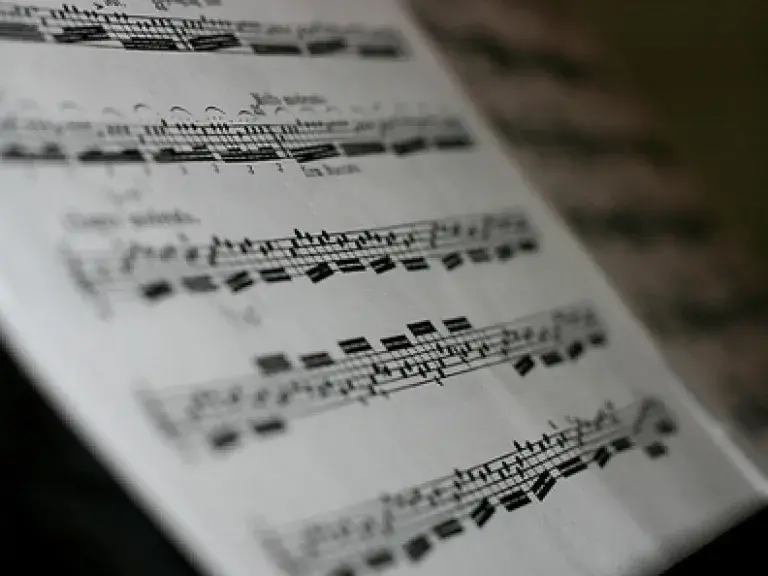
1. Change Up Your Warm-up Exercises
Have you ever noticed that we pretty much always sing our vocalises in a major key? Why is that? So much of today's music is no longer in a simple major key. It can be minor, modal, atonal, or anything in between. So why should we hang on to out-dated major-scale warm-ups?
Next time you practice, try doing your staccato triads in minor tonality. All you have to do is lower the third by a half-step, but the change can break the mold and get your mind working to actually have to think about where to find that pitch. Too easy? Try your 9-note run on a harmonic minor scale.
Got that down? Try Lydian mode (a major scale with the fourth note raised a half step, from F to F on the white keys).
Try Phrygian (a minor scale but with the second note lowered a half step, try E to E on the white keys).
It may make you stumble at first, but soon you will get the hang of each scale, and your brain will thank you for it. Then when you go to warm-up, you will have a whole repertoire of tonalities to choose from.
2. Don't Be a Parrot
So many singers start learning a new piece of music either by listening to a recording, or by sitting down at the piano and plunking it out. I find this parroting technique to be the least efficient way of getting the music in my head. Sure, I can sing it back the first time, but it won't stick. Unless it's irresistibly catchy, I won't remember the tune right away and will have to play it and sing it back again and again until it becomes ingrained.
However, if I start by sight reading the music, when I come back to it again, I will remember how I found in the first time. Then I can read it again the same way, only faster. My mind remembers the intervals, the leading tones and the triads that make up the line, and memorizes them. It's challenging at first, but if you continue with this technique, you will eventually find it a more efficient way of learning music and your sight-singing skills will make leaps that defy gravity.
So many singers start learning a new piece of music either by listening to a recording, or by sitting down at the piano and plunking it out. I find this parroting technique to be the least efficient way of getting the music in my head.
Go to your piano, but instead of playing your first line, only play your first note. (Better yet, try to guess your first note, then see how close you came!) So what's your second note? DON'T TOUCH THAT PIANO! Try to sing it. Use whatever system you prefer: solfege, intervals, or good old-fashioned guesswork. But don't touch the keyboard until after you've sung the note. If you're not sure, check to see if you were right or not. Otherwise, keep going until you get stuck.
Beginning sight singers might have to check themselves after every note. More advanced students can sing entire lines, and eventually entire songs this way.
3. Explore New Repertoire
Go to the library and pick out a book of songs by Satie, Rorem, or somebody you've never heard of. It can be anything, even pieces from the church hymnal, as long as it's something you don't know. Then start from page one and sing. This is pure sightreading practice, but at the same time you're learning new music and exploring composers you might not have experience with. At first you might just feel like you're singing notes, but the more your sightreading skills improve, the less you will be bogged down by intervals and the more the melody and nuances will strike you, even on the first reading.
Find that interval!
Can't sing a minor 7th on command? Think of well-known songs that contain the interval you're trying to sing. Here are some to get you started.
- Minor 2nd: (half step) Jaws theme
- Major 2nd: (whole step) Beginning of a scale
- Minor 3rd: A child's taunting "Nah-nah" song
- Major 3rd: "Doe a Deer..." from Sound of Music
- Perfect 4th: "Here comes the bride..."
- Tritone: "Maria" from West Side Story
- Perfect 5th: "Twinkle, Twinkle Little Star"
- Minor 6th: "When Israel Was in Egypt's land..." from "Go Down Moses"
- Major 6th: "NBC"
- Minor 7th: "There's a Place for Us" from West Side Story
- Major 7th: "Ba-li-Hai..." from South Pacific




